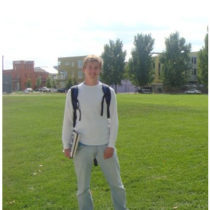Landscape Architecture for Landscape Architects › Forums › GENERAL DISCUSSION › Statistics and GIS?
- This topic has 1 reply, 4 voices, and was last updated 14 years, 11 months ago by
 Jonathan Nelsen.
Jonathan Nelsen.
-
AuthorPosts
-
December 27, 2010 at 4:16 am #166146
 Terry NaranjoParticipant
Terry NaranjoParticipantHas anyone benefited from a biological statistics class relative to GIS? As part of an an MLA program?
(not talking about benefiting from getting a job; regarding ability to utilize GIS in research?)
December 27, 2010 at 5:36 am #166154 Jonathan NelsenParticipant
Jonathan NelsenParticipantI just completed a graduate level statistics course that my major professor recommended I take. My thesis is largely based around GIS analysis and analyzing tree composition in the 1800’s in Iowa. I honestly feel like the class did little to advance my research or provide any relative knowledge that would help.
December 27, 2010 at 12:42 pm #166153 Terry NaranjoParticipant
Terry NaranjoParticipantThanks Jonathan…can you describe the course, or provide the course number and school? I could look it up. This class was also recommended by a professor. I’ve noticed that there are a few different types of statistics courses and wanted to dig further to see if the one you’ve taken matches up with the one that spring course I’m signed up for. Did yours deal with population?
December 27, 2010 at 4:01 pm #166152 Thomas J. JohnsonParticipant
Thomas J. JohnsonParticipantAny kind of GIS training seems beneficial to me, if that’s what you want to do. It’s really up to you. Does it interest you? Biological statistics is a pretty broad term. Are you talking about plants, animals, people, disease…demographics…? It seems that with a solid foundation in GIS and statistics, you could apply that knowledge in a variety of ways; urban design, land planning, emergency response/planning, etc. etc. Sounds like it could open a lot of doors…
December 27, 2010 at 5:05 pm #166151 Terry NaranjoParticipant
Terry NaranjoParticipantI’m very interested in how GIS information can be used in this profession including some of the aspects that you mention. I took an Ecological Design course last semester that utilized GIS. It provided a general introduction to software (ArcGIS). It essence, the ability to utilize GIS is largely, if not entirely, dependent upon the metadata that you put into it. My professor (a PhD in GIS) said that all landscape architecture curriculum should incorporate statistics if they are going to address GIS in any way.
The class description for the course I’m taking this spring can be found here:
http://www.stat.ncsu.edu/courses/st512/
If you’ve seen any of Alan Berger’s recent presentations, he’s a bit controversial, but the way he manipulates the metadata utilizes statistics and GIS in amazing ways that create both stunning visuals and compelling research data.
I’m just interested in how others are using the software and if they are coming at it from a statistical approach. I’m fairly certain that it will be beneficial, I’m just not fully sure how yet at this point.
I’m not sure if there is one yet but wouldn’t mind seeing or starting a thread that asks, ‘How are you utilizing GIS in innovative ways beyond mapping and inventory?” I’m sure this is topic is being address somewhere on this site.
December 27, 2010 at 6:11 pm #166150 macsurfParticipant
macsurfParticipantI just completed an advanced GIS course based largely on using geostatistical analysis. I think you’re using the term “metadata” incorrectly – what you’re thinking of is attribute data, metadata is information about the layer – who made it, when, what it is – whether a shapefile, GDB, etc.
For the final project I modeled the location of elderly populations in Alachua County, Fl for the year 2030 in relation to proposed rapid transit routes. The goal being to determine if this demographic will be served by transit.
I didn’t have to know a great deal about statistics, although I did have to brush up on the basics. ArcGIS online guides and forums go a long way in helping you understand the various processes. A copy of my paper is attached – look at the methodology and spatial model section to get an idea of some functions that were used. Keep in mind that a large part of the paper is devoted to explaining the minute details of the modeling process.
Ordinary least squares, spatial auto-correlation and geographically weighted regression are all things that you would probably become familiar with. Most of these functions are more advanced than most any LA firm would care to bother with. Economic consultants use these type of tools more regularly – according to my professor.
December 27, 2010 at 6:22 pm #166149 Thomas J. JohnsonParticipantDecember 27, 2010 at 7:06 pm #166148
Thomas J. JohnsonParticipantDecember 27, 2010 at 7:06 pm #166148 Terry NaranjoParticipant
Terry NaranjoParticipantThanks for this resource Wes. This is exactly the kind of response I was hoping for.
I haven’t checked out your paper fully yet, but I will let you know if I have any questions.
December 27, 2010 at 7:06 pm #166147 Terry NaranjoParticipant
Terry NaranjoParticipantWell done.
-
AuthorPosts
- You must be logged in to reply to this topic.


